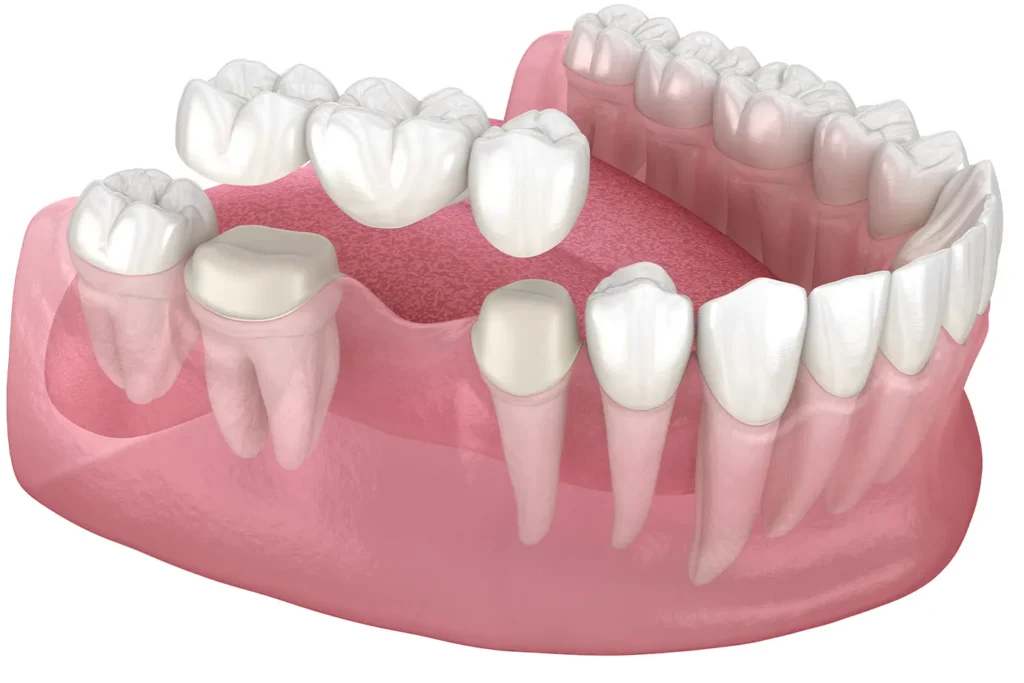What are Dental Bridges?
Every day, patients are discovering the transformative power of dental bridges. But what exactly are they? Dental bridges, as the name suggests, are used to bridge the gap created by one or more missing teeth. They’re composed of two or more crowns for the teeth on either side of the gap — these anchoring teeth are known as abutment teeth — and a false tooth or teeth in between. These false teeth are called pontics and can be made from gold, alloys, porcelain, or a combination of these materials. Dental bridges are supported by natural teeth or implants, offering a robust and reliable solution to missing teeth.
The Dental Bridges Treatment Process


Initial Consultation and Preparation
The journey towards a confident smile with dental bridges begins with an initial consultation at Eastside Family Dentistry. Dr. Alexandra Cristescu will conduct a thorough examination of your dental health to determine the best course of action. If dental bridges are deemed suitable, the abutment teeth are prepared during this first visit. Preparation involves recontouring these teeth by removing a portion of enamel to allow room for a crown to be placed over them. Impressions of your teeth are then taken, which will serve as a model from which the bridge, pontic, and crowns will be made by a dental lab.

Temporary Bridge Placement
After the initial preparation, a temporary bridge will be made to protect the exposed teeth and gums while your bridge is being made. This temporary bridge is crucial for maintaining the health and integrity of your teeth and gums, as well as for preserving your smile and ability to eat and speak normally. Dr. Cristescu will ensure the temporary bridge fits comfortably and matches your natural teeth as closely as possible.
Permanent Bridge Placement
The final step in the dental bridge process is the placement of the permanent bridge. Once your custom-made bridge is ready, the temporary bridge is removed, and the new bridge is checked and adjusted to achieve a proper fit. Multiple visits may be necessary to check the fit of the metal framework and bite. This is dependent on each individual’s case. Once all necessary adjustments are made, the bridge is cemented into place.
The Benefits Of Dental Bridges
Restores Functionality and Aesthetic Appeal
One of the most significant benefits of dental bridges is their ability to restore both functionality and aesthetic appeal. A dental bridge allows you to eat and speak properly, activities that are often taken for granted until missing teeth make them challenging. Plus, dental bridges can help maintain the shape of your face and restore a confident, radiant smile.Prevents Further Dental Issues
Dental bridges can also prevent further dental issues. By filling the gap left by missing teeth, a bridge can prevent remaining teeth from shifting out of position. This shifting can lead to a bad bite and other complications, such as temporomandibular joint (TMJ) disorders.Long-lasting Solution
Finally, dental bridges offer a long-lasting solution to missing teeth. With proper care and regular dental check-ups, dental bridges can last up to 15 years or even longer. This durability makes them an excellent investment in your long-term dental health and overall well-being.






